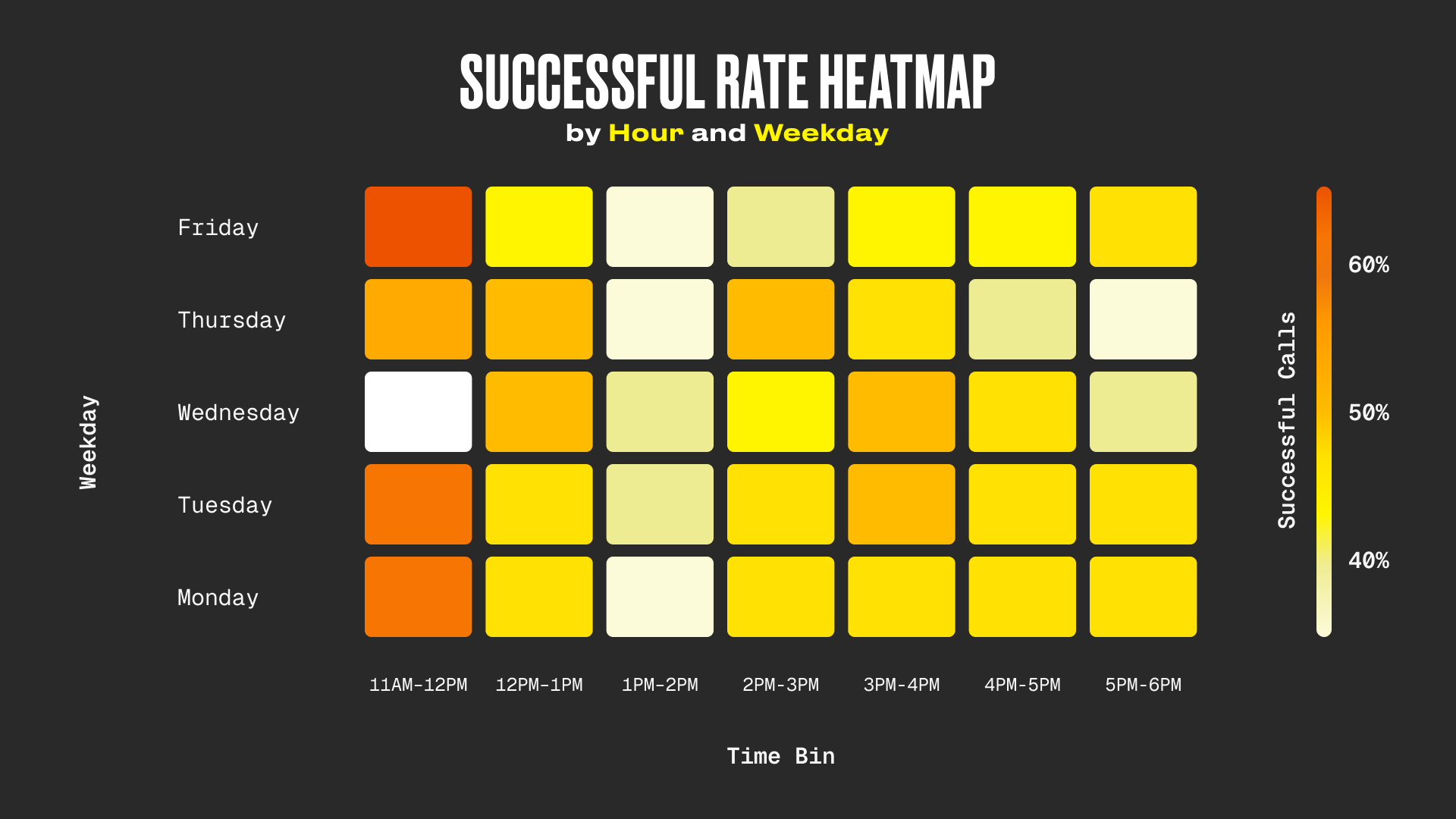What Days and Times are the Best for Closing Deals?


What if the day and time you booked an in-person sales appointment was just as important as your pitch? In the online selling world, this information is readily available. A recent study done by Hubspot highlights that the best day and time to sell over a video call is Tuesday between 10 am and 12 pm.
However, for the 90% of businesses who conduct their sales in person, impactful insights such as this were previously unavailable. The lack of data-driven appointment scheduling can cost sales representatives valuable time and deals that should be won, resulting in revenue slipping through the cracks.
Today, we provide the first ever study to determine which days and times are best to book in-person consultations with clients. These groundbreaking insights can be used by companies to optimize scheduling, maximize sales and boost the effectiveness of a company's sales force.
We leveraged Rilla Intelligence, which has metadata on the outcomes of recorded appointments for over 1,300 companies, to determine which times and days of the work week are the ideal times to schedule in-person sales appointments. For this analysis, we accessed the variables of interest (date, time, and appointment outcomes) from a subset of current Rilla clients from across industries (home remodeling, home building, home services, and auto repair). We drew a random sample of conversations that occurred between January 1st and September 1st of 2025, resulting in a dataset of 16,268 conversations. To measure how successful a day and time was, we created the success rate metric, which takes the difference between the number of calls marked as a win (i.e., “sold”, “invoiced”, “Consultation completed, sale”) and the total number of calls with outcomes that were made during the time period. If time bins had less than 20 total calls, they were excluded from the dataset.


We considered two success metrics: volume, or the number of sales, and effectiveness, the likelihood of a sales call resulting in a sale. From the graphs, we can see that by both volume and effectiveness, Tuesday had the highest number of successful sales and averaged the highest daily success rate, with 3 to 4 pm being the time that averaged the most sales, and 11 am to 12 pm having the highest success rate. However, an appointment on Friday between 11 am and 12 pm is the most effective time bin across the week, as an appointment during this time slot has a 65% probability of being converted into a sale. Catching customers before lunch on Friday has a high probability, but Friday in general has a lower daily average at 43%. Despite the high effectiveness on Friday morning,the worst time to schedule an appointment with clients is just two hours later between 1 and 2 pm, where only 32% of the scheduled appointments end in a sale. Volume wise, Thursday is the worst day for sales appointments, as this is the day we see the lowest number of sales made.
Despite low overall call volume between 11 am and 12 pm on Monday, Tuesday, Thursday, and Friday, this time bin is by far the most effective time to schedule appointments as a consultation has around a 60% chance of being converted to a sale.

Above, we highlight days and times within the work week that have the most sales and where appointments are likely to end in a sale. In order to understand factors influencing unsuccessful sales hours, we used Rilla Intelligence to parse through more than 15,000 conversation transcripts, extracting information on whether the client objects to a sale by mentioning meeting with a competitor at a later date, waiting for a more favorable price, etc. Using the new datadata, we ran a logistic regression model to determine if there is a correlation between objections and dates and times of sales appointments. The model shows a positive correlation between appointments scheduled in the 4 and 5 pm time bin and the probability the client has an objection, meaning that the odds a client objects to a sale significantly increases to nearly 30% between 4 and 5 pm. While not significant, there is a positive correlation between the later part of the week and objections, perhaps suggesting that the territory was covered earlier in the week and the need for services has passed.

Takeaways
Tuesday is the day to staff the most sales representatives and schedule the most appointments as consultations on Tuesday are more likely to end in a sale. On the other hand, Thursday and Friday may be the best day to staff more senior or experienced sales reps in order to overcome the low sales volume and success rate, respectively, associated with those days.
The most valuable insight from the analysis is that customers seem more open and engaged in the pre-lunch window, between 11 am and 12 pm. We suggest shifting more appointments into the late-morning slot. If teams can capture a fraction of that untapped potential, businesses will likely see a noticeable bump in close rates, without adding any more calls to the calendar.
Sales representatives should prepare for more client objections towards the end of the work day with objections peaking around 4 pm. During team huddles on or after Wednesday, sales managers should spend time reinforcing competitor and price objection handling techniques in order to prepare field sales reps for the increased objections.
One thing to consider for your business moving forward is whether to prioritize making the most successful calls possible or prioritize the effectiveness of calls made as the optimum times and days for each vary. Note that this analysis used data from companies across the United States in various different industries. To determine which course of action would best suit your business, we recommend leveraging Rilla Intelligence on your market’s conversation data to determine the sales trends for your market and area.
References
Shahid, Kiran. “The Best Time to Make a Sales Call.” HubSpot Blog, 29 Sept. 2025, blog.hubspot.com/sales/best-time-to-make-a-sales-call.



